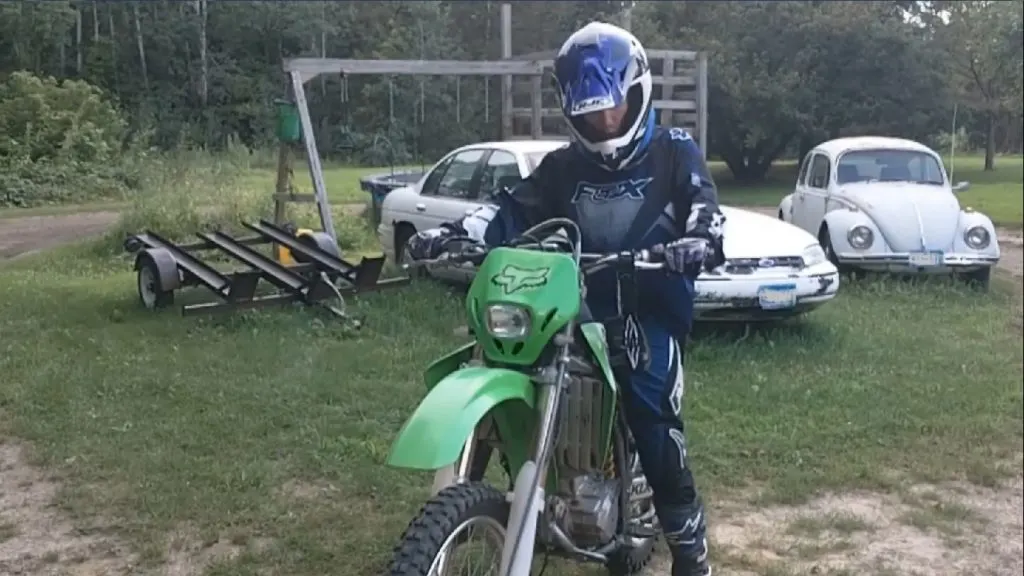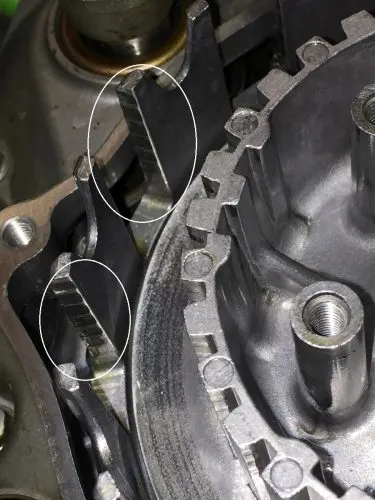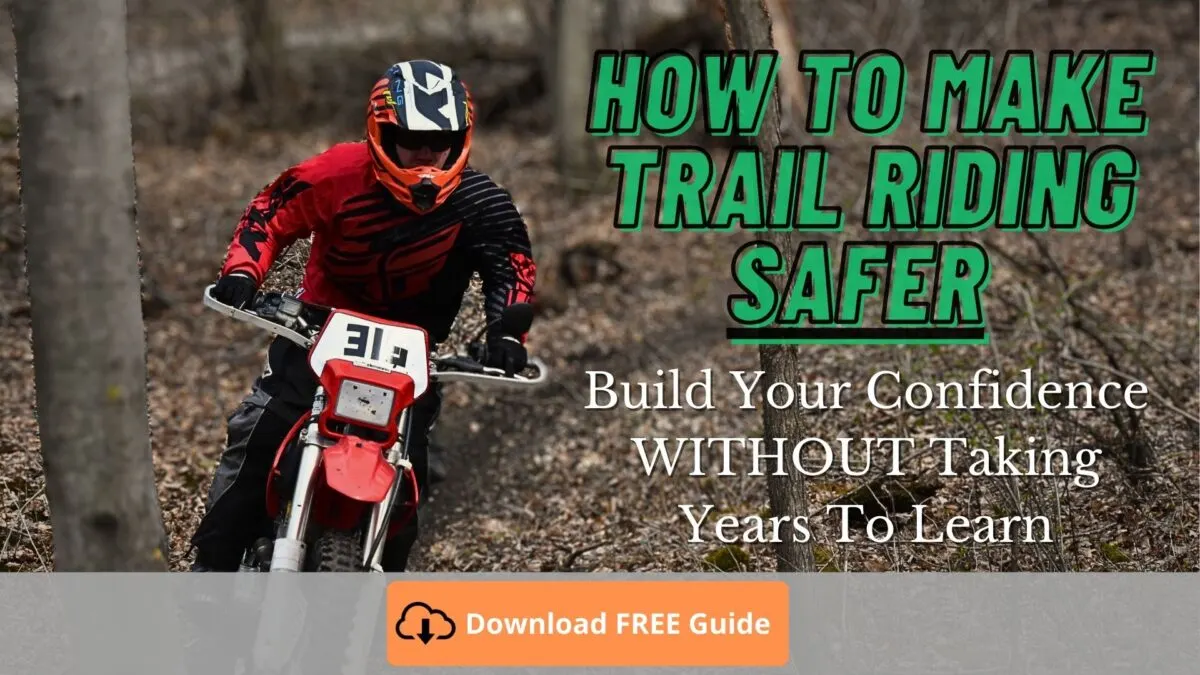Is your dirt bike clutch dragging? What does it mean when a clutch is not disengaging?
If your clutch is having problems, in this article I'll show you how to fix or adjust it and keep it properly functioning.

What Is Clutch Drag?
The most common symptoms of clutch drag are when your bike moves while the clutch is pulled in the clutch won't fully disengage, and neutral is hard to find.
These are frustrating if you're stopped with your bike in gear and it's moving or you want to put it in neutral. You end up shutting the bike off because it's easier to find neutral without the engine running.
What Are The Most Common Causes For Grabbing Clutch?
The most common reasons why your dirt bike or pit bike clutch isn't fully disengaging are: an incorrectly adjusted clutch cable, warped clutch plates, a grooved clutch basket, or sticking clutch plates.
Why Is A Proper Working Clutch So Important?
Whether you're a new or experienced rider, the clutch on your dirt bike is a key factor to riding better. Learning proper clutch control will make you a better rider, and it will reduce wear and potential problems on your bike.
If your clutch is having problems, such as dragging, all of these benefits are going to waste. Clutch drag is not only annoying if you're riding or practicing at low speeds, but it creates more heat in the engine. More heat eventually leads to overheating and bigger engine problems.
Why Does The Bike Move While The Clutch Is Pulled In?
Even if you pull the clutch all the way in, your bike may want to start moving if there's clutch drag. This is because the smooth metal plates and the fiber plates in your clutch are lightly touching either while they spin. This small amount of friction makes them want to "grab" each other and start spinning the countershaft, which rotates the chain and makes the rear wheel drive forward.
The more friction there is, the more it will want to grab and start spinning the wheel. Partially engaged is another technical term for thia.
Read this article for more info on how your dirt bike clutch works.
Why Is It Hard To Find Neutral?
Neutral is hard to find with a dragging clutch because the clutch is partially grabbing and starting to spin the gears. You may have to shut the engine off to get the transmission into neutral if you can't get the clutch to fully disengage.
Is Your Clutch Properly Adjusted?
A cable clutch has a metal cable that goes from the clutch lever to a lever on the engine case. Pulling the clutch lever rotates the lever on the case, which disengages the clutch.
This metal cable stretches over time and needs to be adjusted. If you bought your dirt bike used, it may be incorrectly adjusted before you even ride it.
The goal for proper clutch adjustment is to get just a small amount of "play" or wiggle in the lever before it starts pulling the cable and disengaging the clutch.
To adjust the cable, most dirt bikes have an adjuster knob and a locknut. Break the nut loose and turn the knob in or out to get the right amount of slack in the cable.
Once you have it set, tighten the locking nut back up. No tools required, so don't get it tighter than your fingers can handle loosening it again.
Clutch grabs when bike is warm
Parts wear out after so much use. If they didn't, there wouldn't be such a thing as "maintenance".
The metal clutch plates can take a lot of heat, but even they only take so much. If you like to slip your clutch a lot, you are putting a lot more heat into the clutch and engine.
Too much heat and the plates will literally warp. It doesn't take much warping for the plates to start dragging.
The warping makes the plates act like they are wider than they actually are, which is why they will still drag on the friction plates when the engine is warm, even with the clutch pulled in.
To make your clutch plates last longer, you need to practice better clutch control.
How To Check For Warped Metal Clutch Disks
An easy way to check the flatness of the metal disks is to take each one at a time and lay it down on a perfectly flat surface. This could be a glass table or a granite countertop if you don't have anything flat in your garage.
If there's any gaps under the disk and it wobbles then it's warped.
Is The Basket Grooved?
The clutch fiber plates have tabs that orientate them in the clutch basket. The basket "fingers" hold them in place so they don't spin.
The fiber plates are still hitting and running against the clutch basket fingers, which can create grooves over time.

These grooves will start causing the fiber plates to "catch" and drag as they get pushed out when you pull in the clutch. This results in an inconsistent grabby feeling of the clutch.
What About A KTM Hydraulic Clutch Dragging?
Even a hydraulic clutch (MotoSport), which come on KTM's, can have most of these problems except for the cable adjustment issue. With that said, the hydraulic line can absorb moisture or get air into it for various reasons.
Air bubbles in the line won't allow the clutch to fully disengage because there's not 100% fluid pushing the actuator arm to disengage it.
Bleeding the hydraulic clutch line will make your clutch action feel like new again.
Are The Plates Just Sticking Together?
Has your bike been sitting for a while? Is the oil in the transmission old and dirty?
Oil that's been sitting in the clutch can cause the plates to stick together over time. This is especially true if the oil is dirty.
It's best to change the oil in your bike if you plan on parking and storing it for a few months at a time.
If none of the above methods worked, try taking the clutch plates all out and clean them. Putting them back in and replacing with some fresh oil may allow them to fix your clutch drag problem and run like new again.
For more clutch problem fixes, read this article on common clutch problems and fixes.
How to ride with more control & confidence off-road
Mastering clutch control is one of the important techniques needed to ride with confidence, but there's many more off-road techniques you must learn. I want to show you how to safely ride with more control. Click here to get started.

